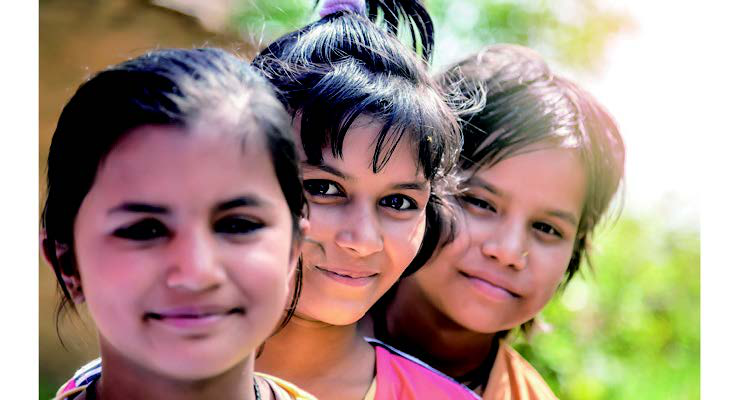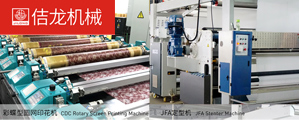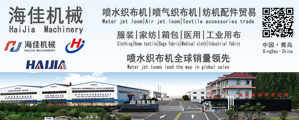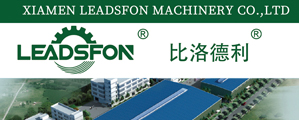The rise of emerging nonwovens markets in Africa, India, Latin America and Southeast Asia
Dec 09, 2020 | by Zhao xh
Nonwovens and their end products show the greatest growth potential in emerging markets, where the market penetration rate is far lower than that of mature markets, and factors such as the increase in disposable income and population growth are particularly important. In these regions, the consumption rate of baby diapers, feminine hygiene products and adult incontinence products is still low. Despite economic, cultural and logistics challenges in many regions, manufacturers of nonwovens and their end products are working hard to ensure that they have the ability to seize future growth opportunities in emerging markets.
Africa
Africa’s emerging economies are providing new opportunities for manufacturers in nonwovens and related industries, who are striving to find the next growth engine. With the increase in income levels and the increasing popularity of health and hygiene related education, the use rate of disposable hygiene products is expected to further increase.
According to the research report “The Future of Global Nonwovens to 2024” released by Smithers, the African nonwovens market accounted for approximately 4.4% of the global market share in 2019, as the growth rate of all regions is lower than that of Asia, Africa is expected to decline slightly to about 4.2% by 2024. The region’s output in 2014 was 441,200 tons, and in 2019 was 491,700 tons. It is expected to reach 647,300 tons in 2024, with annual growth rates of 2.2% (2014-2019) and 5.7% (2019-2024).
In particular, South Africa has become a hot spot for nonwovens manufacturers and hygiene products companies. In view of the growth of the hygiene products market in the region, PF Nonwovens recently invested in a 10,000-ton Reicofil production line in Cape Town, South Africa. The production line has been fully commercialized in the third quarter of last year.


Spunchem, a major nonwovens manufacturer in South Africa, has also taken advantage of the growth in the hygiene products market by increasing its factory capacity to 32,000 tons per year in response to the expected growth in the South African hygiene products market. The company announced its entry into the hygiene products field in 2016, which made it one of the first local spunbond nonwovens suppliers to serve the hygiene products market in the region. Previously, the company mainly focused on the industrial market.
Ronald Prinsloo, the company’s business manager in South Africa, believes that due to the low per capita usage and high birth rate, the African hygiene products market still has great opportunities for growth. “In some countries, only a few people use disposable hygiene products in their daily lives. This is caused by many factors such as education, culture and affordability.” He added.
Factors such as poverty and culture may affect the growth of the hygiene products market, but Mr. Prinsloo pointed out that increased opportunities and rising women’s salaries are increasing the demand for feminine care products in the region. In Africa, H.B. Fuller also has manufacturing plants in Egypt and Kenya.
Multinational companies Procter & Gamble and Kimberly-Clark have long been developing hygiene products business on the African continent, but in recent years, other foreign companies have also begun to join in.
Turkish consumer goods manufacturer Hayat Kimya launched its high-end diaper brand Molfix in Nigeria, the most populous market in Africa, five years ago, and it has been selling well in the region. Last year, Molfix expanded its product range by adding pants-style products. Meanwhile, in East Africa, Hayat Kimya recently entered the Kenyan market through two Molfix diapers products.


Ontex is also working hard to explore the growth potential of hygiene products in East Africa. Three years ago, the European manufacturer of hygiene products opened a new production plant in Hawassa, Ethiopia. In Ethiopia, Ontex’s Cantex brand specializes in producing baby diapers that meet the needs of African families. The company said that this plant is an important step in Ontex’s development strategy and has increased the availability of its products in developing countries. Ontex became the first international hygiene product manufacturer to open a factory in the country. Ethiopia is the second largest market in Africa and can radiate the entire East African region. In Africa, Ontex also manufactures baby and adult care products at its Algeria production site, which opened in 2008.
Oba Odunaiya, director of Operations and Purchasing at Wemy Industries, one of Nigeria’s oldest hygiene products manufacturers, said that the hygiene products market in Africa is gradually growing, and many local and foreign manufacturers have entered the market. “People are increasingly aware of the importance of personal hygiene, so the demand for sanitary napkins and diapers that are cost-effective and beneficial to human health is growing.” He said.
India
The income level and population growth of India, the second most populous country in the world, have increased significantly. As the government and industry continue to promote modern hygiene habits, the demand for products such as baby diapers and feminine hygiene products is expected to grow.
Harsh Gupta, director of H.B. Fuller in India, Middle East and Africa, said that India’s hygiene products market continues to grow rapidly in all segments. This is mainly due to the increase in disposable income, the increase in the number of women employed, the further development of promotional activities and numerous initiatives of governments and non-governmental organizations. “In a vast and diverse market like India, manufacturers have plenty of opportunities for innovation to meet the needs of the market.”
In terms of nonwovens investment, Toray Industries (India) established a new production base in Sri City, India in 2018. The base has two factories, of which the polypropylene spunbond nonwovens factory produces high-quality nonwovens for diapers.
Tatsu Matsushita, general manager of high-performance nonwovens business department of Toray Industries, said: From the perspective of demand growth, India is obviously the most anticipated market, but at the same time, we still need to wait patiently. “Our strategy in India is very simple, which is to establish the best quality supply network locally as soon as possible, so that we can be closer to our customers.”
Nonwovens manufacturer Nanliu Group is also expanding its business through its production base in China. Outside of India, the company produces spunlace and thermally bonded nonwovens in a factory in China mainland and three factories in China Taiwan, with a total annual output of 65,000-70,000 tons.
Nanliu Group’s Indian factory is expected to be completed and put into production in the third quarter of this year, with a monthly production capacity of 600 tons of nonwovens, 2 million facial masks and 3 to 4 million packs of wet wipes. The annual turnover is expected to reach NT$1 billion in three years.
Latin America
Despite the economic challenges, Latin America is still regarded as a region with growth potential by manufacturers of nonwovens and their end products. In fact, in recent years, global manufacturers of hygiene products have continued to acquire and invest in this region.
European hygiene products manufacturers Ontex and Drylock Technologies both hope to achieve growth through acquisitions in Latin America. Ontex established the Americas division in 2016 after acquiring 100% of Grupo P.I. Mabe. In 2017, Ontex expanded its business in the Americas by acquiring the personal hygiene products business of Hypermarcas in Brazil. On the other hand, Drylock acquired two Brazilian personal care companies Mardam and Capricho simultaneously in 2018.
The latest acquisition in the region took place in June. Japanese hygiene products manufacturer Daio Paper Corporation and Marubeni Corporation established a company named H&PC Brazil Participações S.A. in Brazil by indirectly acquiring all the shares of personal care product manufacturer Santher, in which Daio Paper Corporation and Marubeni Corporation hold 51% and 49% of Santher’s shares, respectively.
The hygiene and personal care products market in Brazil is the fourth largest market in the world. In the past five years, the annual growth rates of household paper products and disposable diapers were 5.6% and 5.4%, respectively. In the region, population growth, economic development and higher living standards will promote the increase in the penetration rate of such products. It takes a lot of time and energy for Daio Paper Corporation and Marubeni Corporation to gain market share and generate profits. Therefore, acquiring a promising local company will be an efficient move.
Santher has been selling and manufacturing personal care products in Brazil for more than 80 years, including household paper products, disposable baby diapers and sanitary napkins. Throughout Brazil, the company’s brand awareness is very high. Among local companies, Santher’s disposable diapers and sanitary napkins have the highest market share.
In the field of nonwovens, Brazilian nonwovens manufacturer Fitesa acquired Freudenberg’s hygiene products business in South America in February. Fitesa also produces nonwovens at four production sites in Latin America, located in Brazil, Peru and Mexico.
According to Mariana Mynarski from Fitesa, the main challenge in South America today is that the region is still recovering. Like any emerging market, economic and political developments in South America have had a significant impact on the consumption of hygiene products. “The instability of the Brazilian market has affected the region’s growth for several years. Although we are optimistic about the future, we do not expect any hygiene and medical markets to see strong growth in the short term.”
Southeast Asia
According to Euromonitor International, the Asia-Pacific region is currently the largest market for disposable hygiene products. There is a huge but not fully developed consumer group, ever-increasing consumption awareness, and ever-increasing consumption power. The Southeast Asian market (SEA) achieved a retail sales of USD 5 billion in 2019, and in the next five years, retail sales in the region are expected to grow healthily at a compound annual growth rate of 8%.
Vinda, a manufacturer of hygiene products, is also confident in the region’s growth prospects. Last year, Vinda SEA started the construction of its Southeast Asia headquarters in Malaysia. The new plant covers an area of 27 acres and will include a manufacturing plant with a raw material warehouse, a finished product warehouse, Vinda Innovation Center and a six-story office building.
Dryers, Tena and librasse are currently market leaders in the region, while Vinda Deluxe has enjoyed strong market growth since its launch in 2017. The plant will mainly serve the Southeast Asian market and support more than 25 countries/regions, of which Malaysia is the strongest growth market.
The headquarters is not only the regional hub of Vinda International’s activities in Southeast Asia, including support for sales, technology, marketing and financial functions, but also has Vinda Innovation Center, which is the only innovation center outside of China.
At the groundbreaking ceremony, Ms. Xu, chairman of Vinda SEA, said that the Southeast Asian headquarters can not only gather Malaysian professionals and high-value activities, but also promote the global competitive advantage of the entire group by adopting the latest technologies and new processes. Vinda SEA also predicts that when the headquarters facilities are fully operational, it will further increase productivity by 20%. In line with the five-year plan blueprint set by Vinda Group, the first phase is expected to be completed in 2021, when the warehouse will also be put into operation. The second phase is expected to be officially completed in 2023, when production facilities and innovation centers will also be put into operation one after another.
At the same time, Unicharm has developed steadily in the Thai market, and its baby care product sales continue to grow at a steady rate, thanks to the expansion of distribution channels through direct sales and the move to high-end products. The company stated in its 2019 comprehensive report that its market share is approximately 60%. Just like DSG International (Thailand), which they acquired in September 2018, Unicharm has always been the dominant player in the Thai market, with a market share of approximately 87% after the acquisition.
DSGCL Group has baby and adult diaper production plants in Thailand, Malaysia, Indonesia and Singapore. DSGCL’s baby diaper brands include BabyLove, Fitti and PetPet, while adult diaper brands include Certainty.
In the field of nonwovens, Fitesa acquired a 51% stake in Thailand-based CNC International in 2018, marking its first entry into this fast-growing market, thereby expanding its business in Southeast Asia. Last year, the company announced that its joint venture Fitesa CNC invested USD 70 million in a new spunbond nonwovens production line.
Mynarski from Fitesa said that the new production line is expected to be put into operation in the second quarter of 2020. She said: “Southeast Asia is not only one of the fastest-growing markets in the world, but many important hygiene product manufacturers are also investing here. We firmly believe it is very important for customers to maintain closer relationships, and the Southeast Asian market is the next step to consolidate this position.”
Mynarski added that as a developing market, the main growth drivers in Southeast Asia are still economic development and urbanization, and the penetration rate of diapers here is still very low. “Under such circumstances, economic and political uncertainty remains the key challenge to achieve growth. Another important challenge is the balance between management costs and innovative functions. In fact, this has become an important driving force for our innovation center to develop solutions that can be effectively adopted by customers and can bear fruit outside the laboratory.”
At the same time, Asahi Kasei Spunbond Thailand (AKST) added a new production line to expand its spunbond nonwovens production capacity in Thailand. The third production line will increase the total production capacity by 15,000 tons per year. The total output of the plant is 50,000 tons. Since entering the spunbond nonwovens field in 1973, Asahi Kasei’s Eltas spunbond nonwovens products are widely used in disposable diapers and other hygiene products, automobiles and other industrial applications. Asahi Kasei has expanded its spunbond nonwovens business in two production bases in Japan and Thailand since 2012.
AKST started operating a second production line in 2016 to meet the demand for spunbond nonwovens in the rapidly growing Asian diaper market. The third production line will further enhance AKST’s ability to enhance competitiveness with higher product performance, quality and cost, and meet the growing demand. The production line is expected to be launched in July 2021.
Asahi Kasei Asia Pacific (AKAP), another branch of Asahi Kasei, started operations last year and is the regional headquarters of Asahi Kasei in the ASEAN region.
Asahi Kasei currently has 16 entities in five ASEAN countries. The company said that with steady population growth and continued economic expansion, ASEAN is not only an important manufacturing region, but is also becoming a key market. The Asahi Kasei Group’s regional headquarters in the ASEAN region will enable the region’s increasingly diverse and complex risks to be effectively managed.
AKAP is located in Bangkok, Thailand. It will strengthen marketing and management functions, support the operation of each entity enterprise, develop human resources, promote coordination between different entities and improve operational levels, thereby promoting the business development of Asahi Kasei Group in the ASEAN region.








